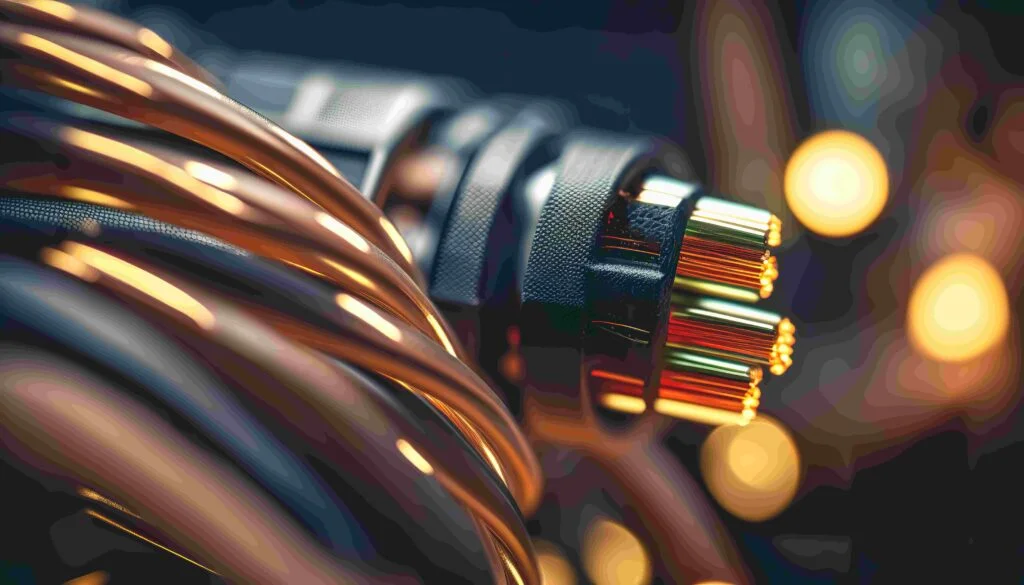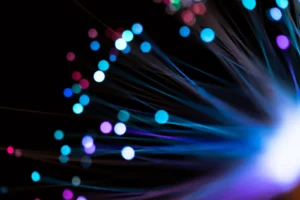Choosing the right internet connection for your home or business can be overwhelming. You need to consider factors like speed, reliability, cost, and availability. Fiber optic and wireless internet each bring distinct advantages, and the right fit depends on your specific needs. In this blog, we’ll break down both options to help you make an informed decision.
What is Fiber Optic Internet?
Fiber optic internet is a high-speed connection that uses glass or plastic fibers to transmit data as light pulses. The speeds range from 100 Mbps to as high as 10 Gbps. It is significantly faster than what most cable internet offers (typically from 25 to 200 Mbps). In fiber optics, where light signals replace electrical signals, data travels much faster and with less loss, even over long distances.
One of fiber’s standout features is its symmetrical speeds. This means the upload speeds match download speeds. For example, with a 1 Gbps fiber plan, you get 1 Gbps for both downloads and uploads. It is ideal for people like YouTubers uploading large files, Work-from-home professionals, and live-stream content creators.
What is Wireless Internet?
Wireless internet like Wi-Fi and mobile data networks transmits data using radio frequencies rather than physical cables. Wi-Fi uses a router connected to a modem to broadcast internet throughout your home. Whereas, mobile data networks like LTE and 5G transmit data from cellular towers directly to devices.
The speeds for wireless internet can vary widely:
- WiFi: Speeds generally range from 10 to 300 Mbps, depending on the internet plan and the router’s distance from devices.
- 4G LTE: Typically offers 12–30 Mbps, but speeds can reach up to 50 Mbps in ideal conditions.
- 5G: Theoretically supports speeds over 1 Gbps. However, based on carrier and location, the real-world speeds generally fall between 50 and 500 Mbps.

What is the Difference Between Fiber and Cable Internet?
Understanding what is the difference between fiber and cable internet can help you determine which is right for your needs. Here’s a side-by-side comparison.
| Feature | Fiber Optic Internet | Cable Internet |
| Speed | Up to 10 Gbps for downloads/uploads | Max 500 to 1,000 Mbps downloads; uploads 30 to 50 Mbps |
| Signal Stability | Strong over 60 miles | Weakens after a few miles and slows during peak times |
| Interference | Minimal interference | Prone to electrical and weather interference |
| Availability | 43% of U.S., mainly urban/suburban | About 87% of the U.S. with existing cable lines |
| Latency | Low, ideal for gaming | Moderate, may affect real-time applications |
| Cost of Installation | Comparatively higher initial costs ($50 to $100) | Lower due to existing infrastructure |
Pros and Cons of Fiber Optic & Wireless Internet
Fiber optic and wireless internet each have unique benefits. Here’s a breakdown of the pros and cons of both technologies:
Fiber Optic Internet:
Pros:
- High speeds up to 10 Gbps with balanced upload and download rates.
- Reliable with minimal disruptions from weather or electrical interference.
- Future-proof for high-demand uses like 4K streaming, gaming, VR, and smart home setups.
Cons:
- Limited availability, particularly in rural or less populated regions.
- Higher installation costs, often reaching up to $1,000/year per household due to specialized infrastructure needs.
Wireless Internet (WiFi, LTE, 5G):
Pros:
- Allows multiple devices to connect without physical cables and provides mobility and flexibility.
- Broad access, especially with mobile data (LTE and 5G). It also covers rural areas where fiber may not be available.
- Quick setup with minimal installation. WiFi routers can be set up within hours, and LTE/5G only requires compatible devices.
Cons:
- Speeds vary due to factors like distance from the router, network congestion, and environmental interference.
- Many wireless plans have data caps. This can reduce speeds once limits are reached, making it not so ideal for heavy users.
- Higher latency compared to fiber which affects real-time applications like gaming and video calls.
How to Choose Between Fiber Optic and Wireless Internet
Selecting between fiber and wireless internet depends on factors like location, usage, and budget. Here’s a quick guide to help you evaluate which option best fits your needs.
| Consideration | Best for Fiber Optic | Best for Wireless Internet (WiFi, LTE, 5G) |
| Location | Ideal for urban areas with fiber | Ideal for rural areas with LTE/5G coverage |
| Usage Needs | Suited for HD streaming, gaming, work | Suited for browsing, light streaming |
| Budget | Typically $60–$120 per month | Generally $30–$70 per month |
| Reliability | High stability, minimal downtime | Stable, but may slow down with congestion |
| Data Requirements | Often unlimited, great for heavy users | Data caps may affect heavy-users |
| Installation | Professional installations, higher cost | Quick setup, minimal equipment needed |
Conclusion
To conclude, the difference between fiber and cable internet often lies in speed and reliability. Fiber optic is ideal for high-speed, stable connectivity, while wireless suits general browsing and budget-conscious users. For an interference-free, high-speed alternative, consider Li-Fi (Light Fidelity), which uses light waves for secure, reliable internet.
Book a session with Oledcomm experts to learn more.




